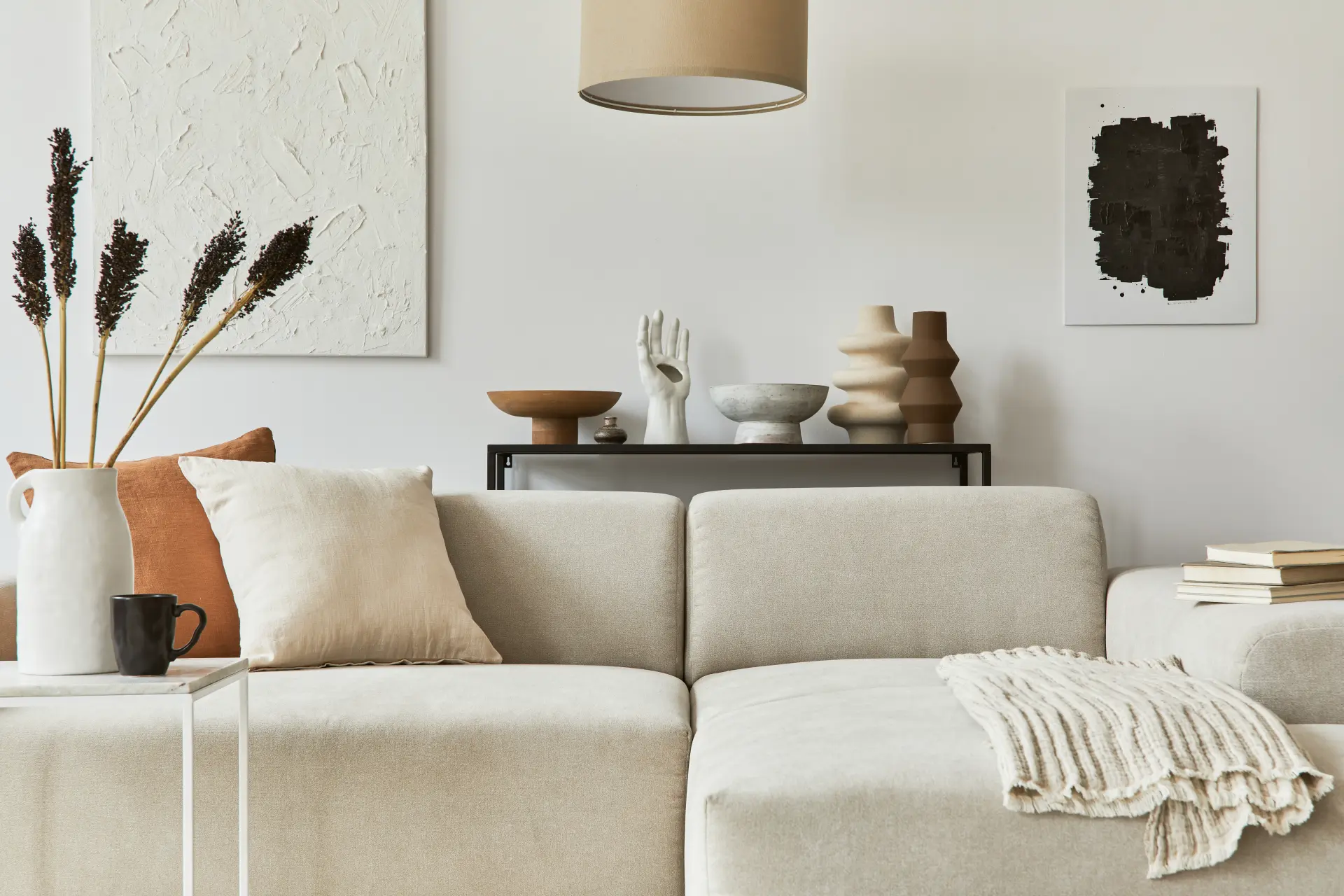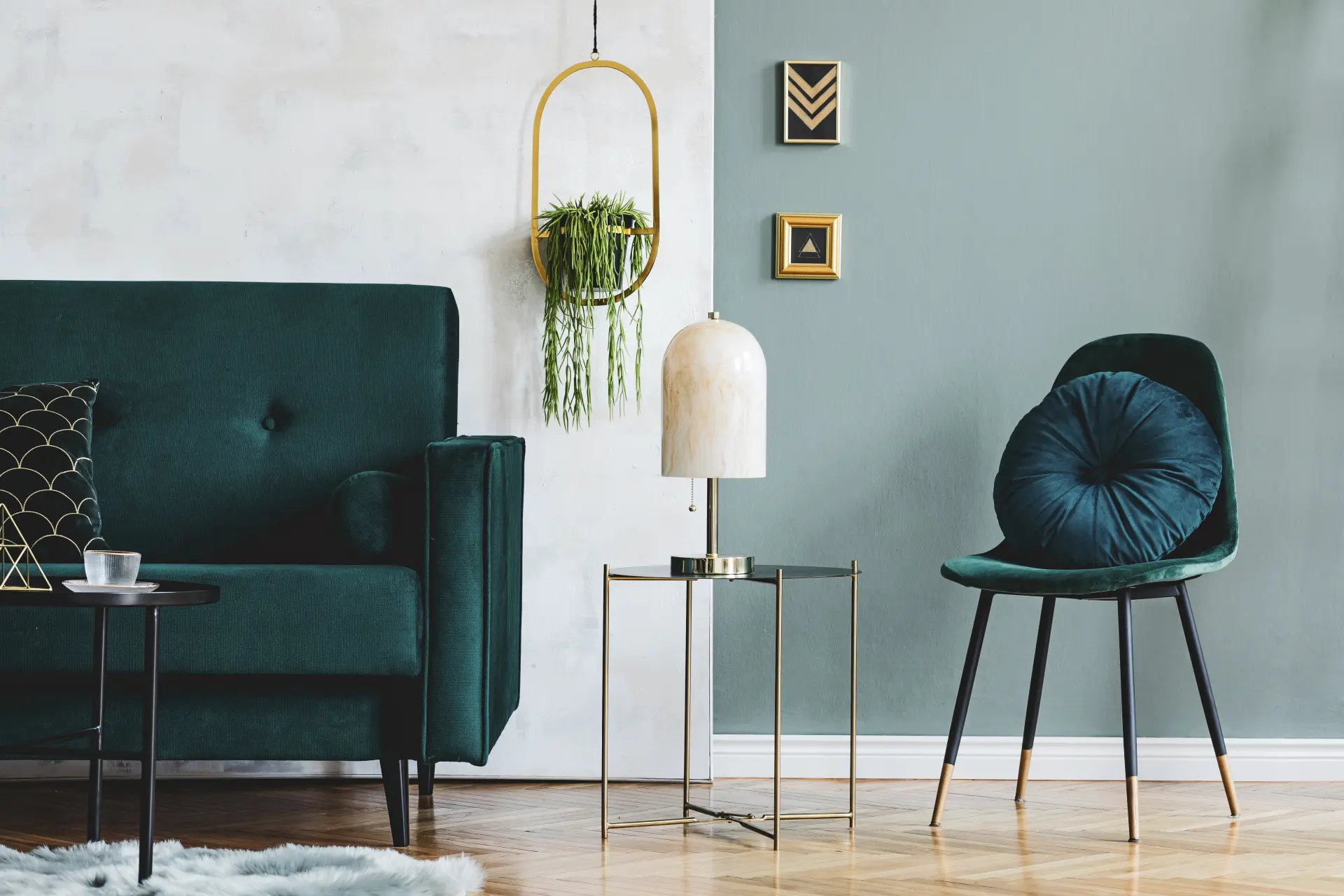Learn what factors to consider when choosing colours for decorating your rooms. Discover how lighting, room size, and mood influence your colour palette and get tips on creating a balanced and visually appealing space that complements your style.
Does The Colour Match The Style?
When decorating a room, it's crucial to consider whether the colour matches the style. This involves thinking about the aesthetic you are aiming for, such as modern, traditional, rustic, or minimalist. For instance, a modern style often suits neutral tones and bold accents like black and white, while a rustic look might favour warm colours and earth tones.
Another factor is how the colours integrate with the furnishings you already have or plan to add. If your room contains classic, wooden furniture, colours like deep greens and browns could enhance the overall feel.
Conversely, a space with sleek, metal furnishings might look best with cooler shades like blues and greys. Considering the style is more than just a personal preference; it's about creating a harmonious look throughout the space. This harmony allows for a unified design that flows smoothly. A well-thought-out colour scheme can tie the entire room together.
Additionally, think about the impact of light on your chosen colours. Natural light can change the appearance of hues throughout the day, so it's wise to test paint in different lighting conditions. Also, keep in mind the room's function. For instance, calming shades might be ideal for a bedroom, while vibrant tones could energise a playroom. Choosing colours that match your style and existing furnishings is key.
Consider How The Colour Interacts With Light
When decorating a room, homeowners must consider how colours interact with natural light. This interaction can alter the appearance and mood of a room, making light an essential factor in interior design. Natural light changes throughout the day and affects how a colour looks. In the morning, shades can appear cooler, while in the evening, they might take on a warmer hue.
For rooms that receive ample light, lighter colours can enhance this brightness, making the space feel more open. For instance, whites, creams, and soft pastels can reflect sunlight, creating a vibrant and inviting atmosphere.
However, rooms with limited natural light may seem dull or dark. In these spaces, richer and deeper tones can add a cosy and intimate feel. Deep reds, burnt oranges, or even a rich chocolate brown can introduce warmth and make a space feel more welcoming. However, it's crucial to balance these darker shades with adequate lighting to avoid making the room feel cramped.
The direction a room faces also influences the interplay between colour and light. North-facing rooms receive cooler light, which can make colours appear more muted. To counteract this, warmer tones like soft yellows, warm beiges, or even soft pinks can help balance the coolness. On the other hand, south-facing rooms bask in warm light throughout the day. These spaces can afford to embrace light blues, greens, and greys without feeling too cold.
East-facing rooms enjoy bright morning light and can look stunning with soft hues that complement this sunshine, like pale yellows and warm beige. As the day progresses and the light fades, these colours continue to maintain a gentle warmth.
Conversely, west-facing rooms catch the warm, golden light of the afternoon and evening. Rich, earthy tones can look particularly striking in these rooms, as they enhance the glow from the setting sun. In summary, understanding how light influences colour is vital when decorating a room.

How Much Of The Room Will The Colour Cover?
When homeowners are considering colour options, it's important to think about how much of the space the colour will cover. Deciding whether to paint all four walls or one wall can impact the room's overall aesthetics. Choosing one colour for the entire room can create a cohesive and unified look.
However, this requires careful selection of the shade, as it will dominate the space. Whites, beiges, or soft greys are usually safe choices for larger areas. These colours work well without overwhelming the room, making the area feel calm and spacious.
Alternatively, painting a feature wall in a different, more vibrant colour can add complexity and interest without becoming overpowering. This technique strikes a balance between boldness and subtlety and acts as a focal point. A feature wall allows for creativity while maintaining harmony in the room. Considering the room's layout and functionality is also crucial.
For example, in a dining room, a darker colour can create a cosy and intimate atmosphere. On the other hand, a bright and airy colour might be better suited for a living room as it promotes relaxation and openness.
In summary, homeowners need to consider how much of the room the chosen colour will cover. By planning the coverage of colour, you can achieve a design that enhances both functionality and aesthetic appeal.
What Mood Do You Want The Room To Achieve?
When decorating a room, homeowners must consider the mood they want to achieve. Understanding their desired atmosphere is crucial as colours can impact the feel of a space. Warm colours are known to evoke feelings of energy and excitement.
These shades are perfect for areas where you want to encourage interaction and activity, such as dining rooms or kitchens. For example, a burst of red or orange on one wall can make a lively and inviting statement. These colours can stimulate conversation and create a vibrant, upbeat environment.
Conversely, cool tones tend to have a calming and relaxing effect. They are well-suited for spaces intended for rest and relaxation, such as bedrooms. A room painted in shades of blue, for instance, can create a serene environment.
Neutral tones are versatile and can be used to create a sophisticated and balanced look. They provide an excellent backdrop for other colours and can help make a room feel timeless. Neutral shades can also make spaces appear larger and more open, offering a clean slate that can be accentuated.
Ultimately, considering the mood you want to create helps guide your colour choices, making it easier to select colours that align with your intentions. By thoughtfully choosing colours, you can transform your home into a series of rooms that look beautiful and feel just right.

Consider The Layout Of Your Room And Whether You Want The Colour To Complement Or Contrast
It’s essential to consider the layout of your room and decide whether you want the colours to complement or contrast. The layout includes the room's size, shape, and architectural features - all of which influence how colours interact with the space.
In a smaller room, light colours can help make the space feel larger and more open. Soft shades like pastels or neutral tones can create an airy atmosphere. These colours reflect more light and enhance the room’s sense of openness. For example, painting the walls in a light beige or soft grey can make a tiny bedroom feel larger.
However, for a spacious room, darker tones might be more appropriate. Darker colours can add warmth and a sense of cosiness, making a large area feel more intimate. Rich hues like deep blues, earthy browns, or dark greens can make a large living room feel more grounded.
When deciding on colours, you also need to think about whether you prefer a complementary or contrasting palette. Complementary colours create a harmonious and cohesive look.
This approach involves using different shades within the same colour family to achieve depth and unity. For example, pairing light blue walls with navy furniture creates a balanced atmosphere. This method works well if you want a relaxing and serene environment.
On the other hand, contrasting colours can add visual interest to a room. Contrasting colours consist of colours that are opposite each other on the colour wheel, such as green and red. These combinations can make certain elements stand out and add drama to the design. By selecting the right colours, you can transform any room into an inviting space.
Painters Northampton
We hope you found this article, 'What Factors Should You Consider When Choosing Colours To Decorate Rooms?' useful. If you require further assistance please contact our experienced painter and decorator in Northampton. We will be happy to help you redesign and decorate your home interior for maximum comfort and entertainment.

